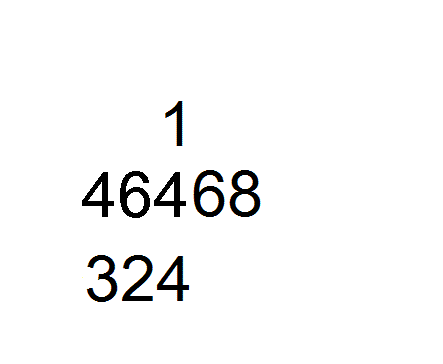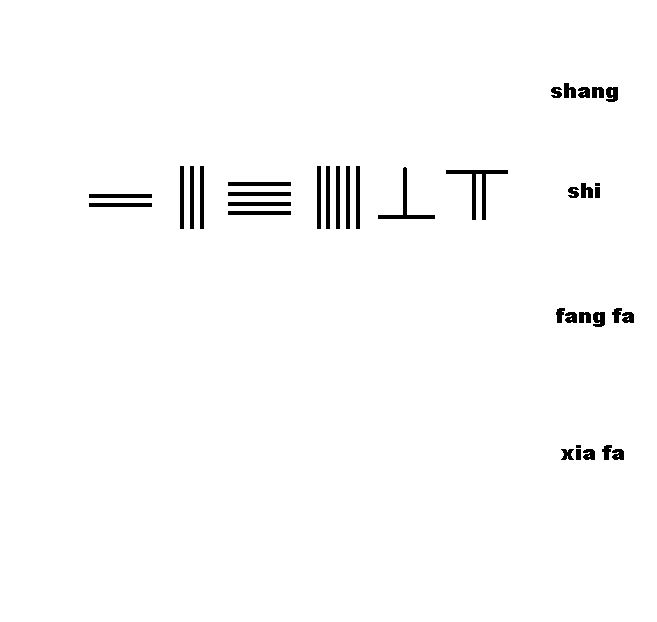Sunzi Suanjing on:
[Wikipedia]
[Google]
[Amazon]
 ''Sunzi Suanjing'' () was a mathematical
''Sunzi Suanjing'' () was a mathematical



 The book is divided into three chapters.
The book is divided into three chapters.
Sun Zi at MacTutor
treatise
A treatise is a formal and systematic written discourse on some subject, generally longer and treating it in greater depth than an essay, and more concerned with investigating or exposing the principles of the subject and its conclusions."Treat ...
written during 3rd to 5th centuries AD which was listed as one of the Ten Computational Canons during the Tang dynasty
The Tang dynasty (, ; zh, t= ), or Tang Empire, was an Dynasties in Chinese history, imperial dynasty of China that ruled from 618 to 907 AD, with an Zhou dynasty (690–705), interregnum between 690 and 705. It was preceded by the Sui dyn ...
. The specific identity of its author Sunzi (lit. "Master Sun") is still unknown but he lived much later than his namesake Sun Tzu
Sun Tzu ( ; zh, t=孫子, s=孙子, first= t, p=Sūnzǐ) was a Chinese military general, strategist, philosopher, and writer who lived during the Eastern Zhou period of 771 to 256 BCE. Sun Tzu is traditionally credited as the author of ''The ...
, author of ''The Art of War
''The Art of War'' () is an ancient Chinese military treatise dating from the Late Spring and Autumn Period (roughly 5th century BC). The work, which is attributed to the ancient Chinese military strategist Sun Tzu ("Master Sun"), is com ...
''. From the textual evidence in the book, some scholars concluded that the work was completed during the Southern and Northern Dynasties
The Northern and Southern dynasties () was a period of political division in the history of China that lasted from 420 to 589, following the tumultuous era of the Sixteen Kingdoms and the Eastern Jin dynasty. It is sometimes considered as ...
. Besides describing arithmetic methods and investigating Diophantine equation
In mathematics, a Diophantine equation is an equation, typically a polynomial equation in two or more unknowns with integer coefficients, such that the only solutions of interest are the integer ones. A linear Diophantine equation equates to a c ...
s, the treatise touches upon astronomy
Astronomy () is a natural science that studies astronomical object, celestial objects and phenomena. It uses mathematics, physics, and chemistry in order to explain their origin and chronology of the Universe, evolution. Objects of interest ...
and attempts to develop a calendar
A calendar is a system of organizing days. This is done by giving names to periods of time, typically days, weeks, months and years. A date is the designation of a single and specific day within such a system. A calendar is also a physi ...
.
Contents
Chapter 1
Chapter 1 discusses measurement units of length, weight and capacity, and the rules ofcounting rods
Counting rods () are small bars, typically 3–14 cm long, that were used by mathematicians for calculation in ancient East Asia. They are placed either horizontally or vertically to represent any integer or rational number.
The written fo ...
. Although counting rods were in use in the Spring and Autumn period
The Spring and Autumn period was a period in Chinese history from approximately 770 to 476 BC (or according to some authorities until 403 BC) which corresponds roughly to the first half of the Eastern Zhou period. The period's name derives fr ...
and there were many ancient books on mathematics such as ''Book on Numbers and Computation
The ''Book on Numbers and Computation'' (), or the ''Writings on Reckoning'', is one of the earliest known Chinese mathematical treatises. It was written during the early Western Han dynasty, sometime between 202 BC and 186 BC.Liu et al. (2003), ...
'' and ''The Nine Chapters on the Mathematical Art
''The Nine Chapters on the Mathematical Art'' () is a Chinese mathematics book, composed by several generations of scholars from the 10th–2nd century BCE, its latest stage being from the 2nd century CE. This book is one of the earliest sur ...
'', no detailed account of the rules was given. For the first time, ''The Mathematical Classic of Sun Zi'' provided a detail description of the rules of counting rods: "one must know the position of the counting rods, the units are vertical, the tens horizontal, the hundreds stand, the thousands prostrate", followed by the detailed layout and rules for manipulation of the counting rods in addition, subtraction, multiplication, and division with ample examples.
Chapter 2
Chapter 2 deals with operational rules for fractions with rod numerals: the reduction, addition, subtraction, and division of fractions, followed by mechanical algorithm for the extraction of square roots.Lam Lay Yong
Lam Lay Yong (maiden name Oon Lay Yong, ; born 1936) is a retired Professor of Mathematics.
Academic career
From 1988 to 1996 she was Professor at the Department of Mathematics, National University of Singapore (NUS). She graduated from the Un ...
and An Tian Se, Fleeting Footsteps p65, ''World Scientific'',
Chapter 3
Chapter 3 contains the earliest example ofChinese remainder theorem
In mathematics, the Chinese remainder theorem states that if one knows the remainders of the Euclidean division of an integer ''n'' by several integers, then one can determine uniquely the remainder of the division of ''n'' by the product of thes ...
, a key tool to understanding and resolving Diophantine equation
In mathematics, a Diophantine equation is an equation, typically a polynomial equation in two or more unknowns with integer coefficients, such that the only solutions of interest are the integer ones. A linear Diophantine equation equates to a c ...
s.
Bibliography
Researchers have published a full English translation of the ''Sūnzĭ Suànjīng'': * ''Fleeting Footsteps; Tracing the Conception of Arithmetic and Algebra in Ancient China'', byLam Lay Yong
Lam Lay Yong (maiden name Oon Lay Yong, ; born 1936) is a retired Professor of Mathematics.
Academic career
From 1988 to 1996 she was Professor at the Department of Mathematics, National University of Singapore (NUS). She graduated from the Un ...
and Ang Tian Se, Part Two, pp 149–182. World Scientific Publishing Company; June 2004
The original Chinese text is available on Wikisource.
External links
Sun Zi at MacTutor
References